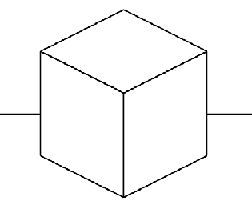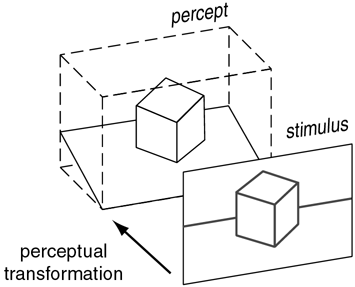stimulus


| Previous | Return to Steve Lehar | Next |
A two-dimensional visual stimulus promotes a three-dimensional perceptual experience. The informational transformation of perception therefore can be described as an expansion from a two-dimensional image to a three-dimensional data structure expressed as solid volumes, bounded by colored surfaces, embedded in a spatial void.
stimulus
|

|
The perceptual transformation therefore apparently solves what is known as the inverse optics problem, i.e. to reverse the perspective projection of the lens of the eye. This problem however is underconstrained, because there are an infinite number of arrangements in the visual field that all project to the same retinal image. How does the visual system select from this infinite range of possible percepts to produce the single perceptual interpretation observed phenomenally? The answer to this question is of central significance to understanding the principles behind perception, for it reveals a computational strategy quite unlike anything devised by man, and certainly unlike the algorithmic decision sequences embodied in the paradigm of digital computation. The transformation observed in visual perception gives us the clearest insight into the nature of this unique computational strategy.
See here for an emergent soap-bubble mechanism proposed to account for the computational transformation in perception.
| Previous | Return to Steve Lehar | Next |